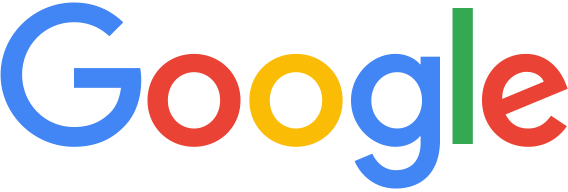Although Google’s new logo seems to have had a ‘marmite-like effect on the world, I for one, am left unable to get my knickers in a twist over it. It still looks like Google. Acts like Google. Feels like Google. It's just a slightly cleaner cut of the cloth.
Logo’s are the cherry on top of a brand. The visual symbol, that the world (or your audiences at least) are meant to recognise you by. No one falls in love with a logo - except perhaps designers. We fall in love with a brand because that brand means something to us personally. And we all know that creating a brand isn’t about creating a logo. It’s about creating and managing the myriad ways your company interacts on every level with every audience you have. The goal being that any interaction is always positive.
Google however are smart - they didn’t get to be the fifth-largest company in the world being anything else.
So whilst the world is deciding whether they love or hate its fairly innocuous logo changes, Google’s announcement that it is going to rename itself Alphabet has met with relative silence. When the tittle-tattle of opinions did finally bubble to the surface it was on trite points like the name being too generic or mumbling about not owning the web rights or Twitter handles.
Google is changing its brand architecture big style. It is moving from a monolithic type identity - Like Branson’s Virgin – to a house of brands architecture like that of LMVH or Diageo. One thing that makes this move intriguing is that Google is going in the opposite direction to the general trend over recent years (see Unilever (2004) and Procter & Gamble (2011)), which has been brand consolidation and the move towards a single branded house approach to brand architecture.
Presiding at the head of its new house of brands structure, Google’s holding company Alphabet will essentially be invisible to the likes of you and me; and only relevant to its founders, senior employees and, perhaps more importantly, the investor market. Investors are said to have been pushing Google for a re-organisation of their portfolio for quite some time. This is partly because Googles growth rate has been huge and rapid with over 180 acquisitions into areas as diverse as driverless cars, a moonshot programme (X lab), smart home products (Nest) and even life extension bio-research (Calico). Google's own brand name is globally huge and so synonymous with search and advertising that it's downright confusing and difficult to get your head around the relevance, correlation and relationships between all the portfolio companies and the offer for an investor.
Google's portfolio as a result is huge and confusing, and the thought of even attempting to integrate the many cultures into the one would be enough to make most of us run for the Starship Enterprise. Google’s complexity and scale of growth therefore demands a more efficient and structured approach. One that makes it easier for them to buy and sell companies. One that gives the other brands within Alphabet the freedom to innovate and do things their own way. One that gives investors clarity over what they are investing in. Yet one that protects the founders, enables them to nurture whilst also holding those businesses to account and distance themselves from potential corporate risk should that need ever arise.
It will be interesting to see whether the new brand architecture adhere to the basic principle of being clear about what you stand for and gives all parties the clarity they seek to help the businesses in Google’s portfolio perform better. What it will provide is a strategic brand framework for the founders, to do what they want to do, only better. And I for one, can’t wait to see what magic occurs when their fledgling products finally emerge from the nest.
Both Google and Apple’s brand are resolutely customer-focused and have evolved to clearly differentiate what makes their offer different to and more desirable than anyone’s else. Brands they are a changing… as is the world around us at a frightening pace, and its best to keep up or get left back in the starters blocks.

